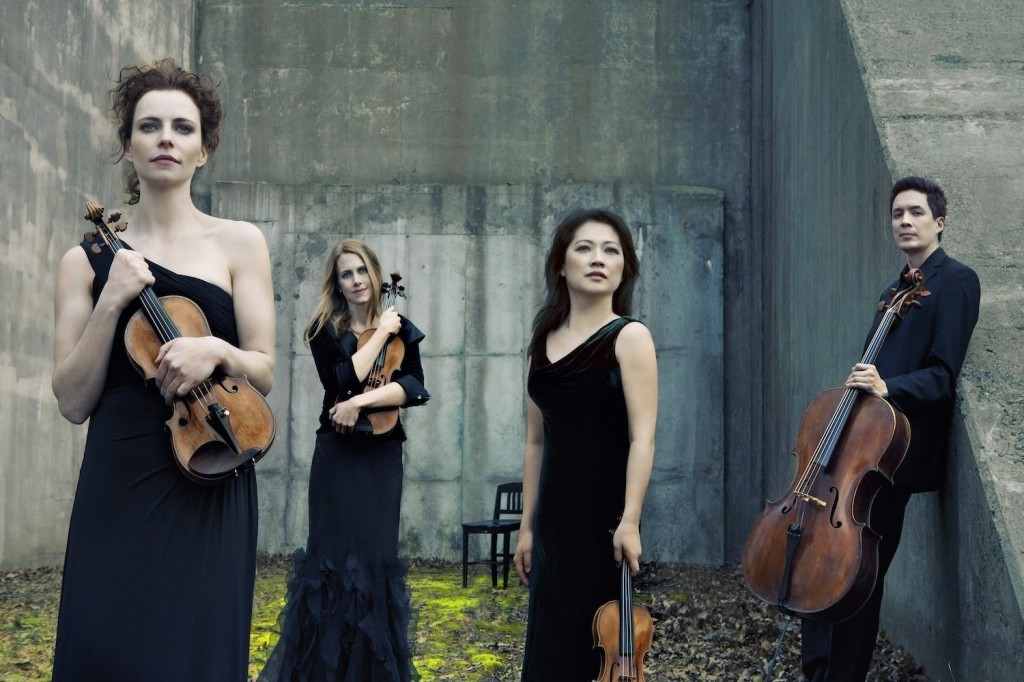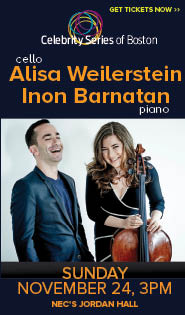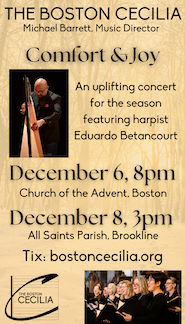Daedalus Quartet provides compelling advocacy for Lerdahl quartets

The Daedalus Quartet performed Fred Lerdahl's complete string quartets Thursday night at the Gardner Museum. Photo: Lisa-Marie Mazzucco
If the string quartet is a conversation among friends, then the members of the Daedalus Quartet are so close that they can finish each other’s sentences.
That was the impression gathered after the ensemble’s performance of three string quartets by Fred Lerdahl at Calderwood Hall in the Gardner Museum Thursday night, the opening concert of the “Avant Gardner” series.
Hardly strangers to the works, Daedalus members Min-Young Kim (violin), Matilda Kaul (violin), Jessica Thompson (viola), and Thomas Kraines (cello) have performed Lerdahl’s quartets in recent concerts at Columbia University’s Miller Theatre. The ensemble released a recording of the works for Bridge Records last October. And they commissioned and premiered the String Quartet No. 3, which was a finalist for the 2010 Pulitzer Prize.
But it is rare to hear all three of the Lerdahl quartets together in a single hearing.
It is a difficult task to bring life to music that at first hearing seems inaccessible. Lerdahl (b. 1943), an important theorist, is fascinated with music and cognition. His book A Generative Theory of Tonal Music, written with linguist Ray Jackendoff, expands upon Noam Chomsky’s linguist theories of transformational grammar and applies those concepts to musical analysis.
Lerdahl’s three string quartets, written over a thirty-year span, are exemplars of transformational form. Each work, cast in a single movement, can stand alone, but the quartets together form a cyclic whole; the Second and Third Quartets expand upon a single chord heralded in the opening bar of the First.

Fred Lerdahl
In his introductory remarks before the concert, Lerdahl said that he had always viewed the string quartet as a psychological medium. Similar to Bartok’s string quartets, Lerdahl’s works in the medium are at times tough and angular, at others subtle to the point of whispering. In addition, there are moments of high energy and driving intensity that leap from the more static sections of the musical texture.
The String Quartet No. 1 (1978) comprises fifteen expanding geometrical variations. From the opening chord, each passing phrase grows longer and more complex, like organisms evolving into larger forms as the music progresses. Each variation is roughly one-and-half times longer than the previous one, the composer noted.
The piece contains moments of subtlety akin to the string works of Webern and Schoenberg. The performers—through muted strings, harmonics, and sul ponticello playing—controlled Lerdahl’s score with finesse.
The String Quartet No. 2 (1982, rev. 2008) picks up where the First leaves off. Here there are two variations—the first is about nine minutes in length, the second is thirteen–that continue the expanding variation concept.
Like the First Quartet, the music is motivic; the structure comes together from fragments of melodic, harmonic, and rhythmic phrases. But the Second Quartet possesses greater intensity. There are brief points where the music breaks into a whiff of melody; the cello and first violin trade singing phrases over the churning accompaniment.
At the end of the Second Quartet, Lerdahl restates the original chord from the First Quartet’s opening. But here it is transformed, whistling in the ensemble’s high tessitura, which leaves the listener with the impression that the variation process is not yet complete. The work is as much a study in string timbre as it is in variation technique. The Daedalus Quartet handled the myriad glissando, tremolo, pizzicato, and quick-finger arco passages with refinement, leaving no break in the overall structure.
Lerdahl’s String Quartet No. 3 (2008) supplies the apotheosis. Though similar to the other two, the quartet, cast as a single long variation, stood out last night. As in the previous works, the performers exhibited excellent control of the technical elements, which brought out the shifting moods of the piece.
The quartets, in general, avoid the Classical notions of climax and release. But the Third Quartet, to this writer, exhibited a wider diversity of mood, employing both abrupt shifts and gradual transitions between phrases. Lerdahl, through sawing, agitated passages, builds tension in the piece over a short time span before relaxing the motion—a sort of Wagnerian drama in miniature.
As the Third Quartet draws to a close, the music slowly unravels. The viola, cello, and second violin reintroduce the unifying opening chord from the First Quartet while the first violin descends from a sustained pitch high atop its register to join the others. The performers concluded the work and the full quartet cycle with a return to the opening of the First Quartet, only this time, the chords were played in reverse.
Like a well-oiled machine, the Daedalus Quartet brilliantly executed the technical complexities within Lerdahl’s scores while maintaining full ensemble balance. These gifted musicians effectively brought life to difficult works that deserve to be heard more widely and more often.
The next Avant Gardner concert will mark John Cage’s centennial year with the Callithumpian Consort performing Cage’s Postcard from Heaven and Cheap Imitation, Morton Feldman’s Two Pieces for Clarinet and String Quartet and Luigi Nono’s “Hay que caminar” soñando. Concert time is 7 p.m. November 1. gardnermuseum.org
Posted in Performances


Posted Oct 20, 2012 at 10:10 am by Andrew Moravcsik
This was a brilliant concert–even better than this quartet’s recent recording of these works. The subtlety, technical finesse and musicality of the playing were astonishing.